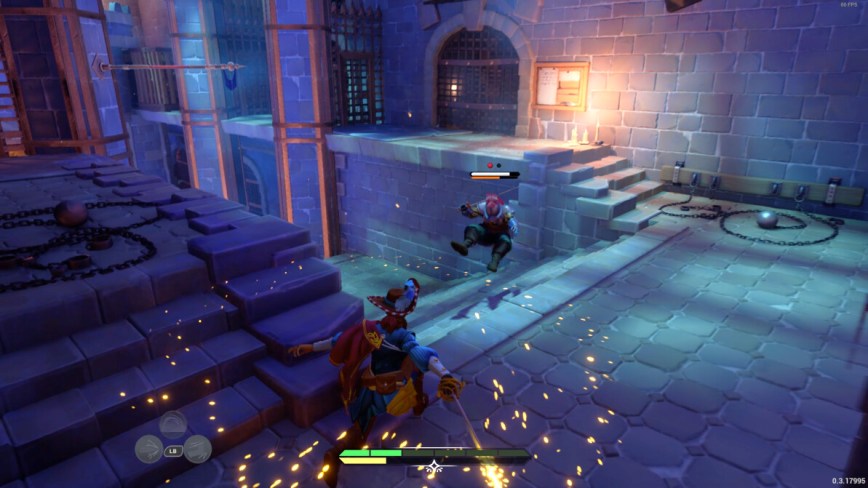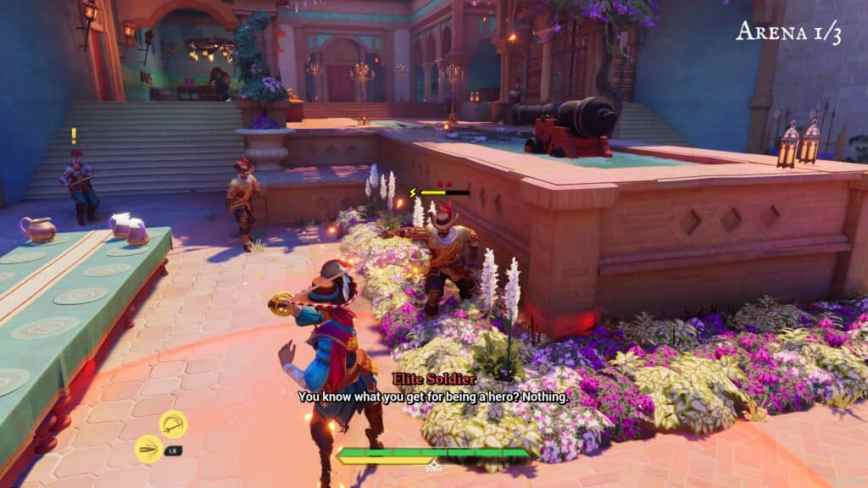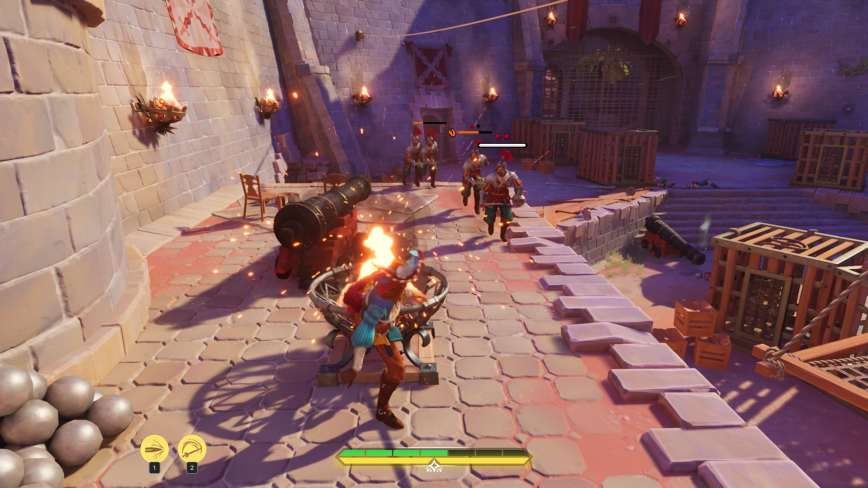En Garde! can best be likened to envisioning Inigo Montoya starring in a lively Saturday morning cartoon. Across a series of four episodes (levels), you engage in clashes with swarms of adversaries and navigate a vibrant Spanish-inspired city. While never explicitly stated, the setting seems unmistakably Spanish. Each episode takes you along a linear path where you’ll come across a handful of collectibles and hidden secrets. Traversal involves straightforward actions such as leaping to grasp ledges, swinging on bars, and navigating the environment. While platforming isn’t the central focus, it serves as a satisfying interlude amid the action.
Adalia, a skilled duelist, frequently contends with multiple adversaries simultaneously. Combat hinges on effective management and responsive tactics against your foes. Each enemy possesses a guard meter that must be depleted before you can inflict damage, thereby reducing one of their health points above the bar. You can employ relentless attacks on a single adversary, yet overdoing this leaves you vulnerable to counterattacks or other opponents.
In addition to attacking, adeptly countering enemy assaults is crucial. It allows you to momentarily thin out the horde and concentrate on a single opponent. The environment serves as a potent ally, enabling you to boot enemies off bridges or platforms for instant incapacitation (humorously, they feign death out of fear instead of perishing), send them tumbling downstairs to weaken their defenses, or slam them into walls for a prolonged stun. Crates, barrels, explosives, and throwable objects can also be utilized or kicked to stun enemies without resorting to dodging or parrying. Mastering the art of dividing and conquering within each arena proves to be incredibly enjoyable, albeit deceptively challenging.
Upon achieving a specific milestone, The Arena becomes accessible from the title screen. This mode resembles a rogue-like experience, thrusting you into battles against randomized enemy waves while subjecting you to various buffs and debuffs – from regaining health per successful hit to constant panache drainage. The combat, independently enthralling, ensures enduring engagement, complemented by the pursuit of uncovering secrets within each level. The game boasts eye-catching visuals characterized by a vibrant art style. Distant landscapes and objects adopt a painterly allure, contributing to the game’s visual charm. Evidently an indie creation, certain cutscenes exhibit slightly stiff animations, and each Episode is bordered by static dioramas, yet these quirks remain visually appealing. Particularly endearing are the animations during Adalia’s interactions with her crush, Zaida.
Lastly, the music is serviceable, featuring traditional Spanish instruments that aptly accompany each battle without overpowering the experience. While not exceedingly remarkable, the voice acting contributes to the cartoonish ambiance through exaggerated performances. Notably, the swordplay sound effects shine, with numerous auditory cues aiding in managing the chaotic action, punctuated by satisfying sword clashes upon successfully landing a blow. Despite the game’s frenetic nature, the sound design adeptly assists players in seamlessly navigating the tumultuous environment.





